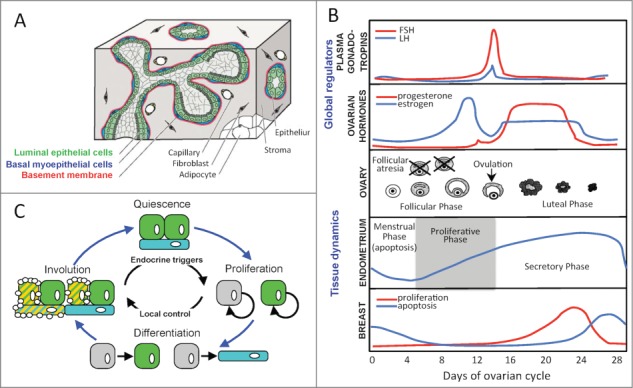Figure 1.

The mammary gland as a dynamic system. (A) A cartoon of the spatial organization of different cell types within the mammary gland, as similarly depicted in ref. 46. Luminal epithelial cells (green shading), basal myoepithelial cells (blue shading), and the basement membrane (red shading) are the main cellular components of an epithelial tree composed of ducts and terminal alveolar buds that remodel to produce milk during lactation. The epithelial tree is surrounded by a fibrous tissue structure, shown in gray, that contains stromal cells, fibroblasts, adipocytes, and blood capillaries. (B) The coordinated dynamics associated with plasma gonadotropins and ovarian hormones levels and with reorganization of the ovary, uterine endometrium, and breast during the phases of the ovarian cycle, as depicted in ref. 22. (C) A graphical depiction of the reorganization of the mammary gland during the reproductive cycle. Endocrine hormones initiate cellular proliferation whereas cellular differentiation into different subtypes is controlled by local contextual signals. In the absence of a reproductive event, an involution stage, which involves programmed cell death to reduce the tissue structure, precedes the return to a quiescent phase.
